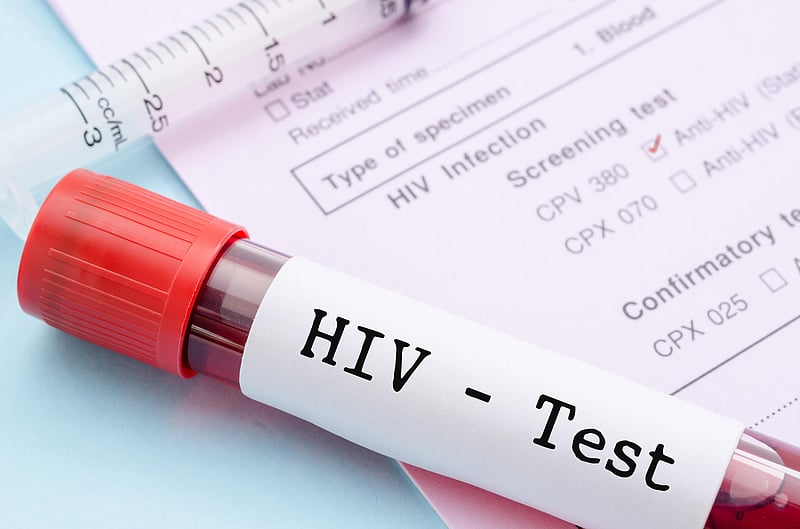Using the RefillRx mobile app? Then you will love our new, ENHANCED Sentry Drug Center mobile app.
Quickly request refills or login and manage your prescriptions on the go!
Available on both iTunes and Google Play.
Call or Visit for All of your Vaccination Needs!
Get Healthy!

- Dennis Thompson
- Posted March 29, 2023
Scientists Get Closer to Understanding 'Hidden' HIV
Researchers are closing in on another immune system "hideout"that HIV uses to persist in the human body for years.
A subset of white blood cells called myeloid cells can harbor HIV in people who've been virally suppressed for years, according to a new small-scale study funded by the U.S. National Institutes of Health (NIH).
The researchers showed that HIV in specific myeloid cells can be reactivated, with the virus going on to infect new cells. These specific cells include short-lived monocytes and longer-lived monocyte-derived macrophages.
The results suggest that myeloid cells contribute to a long-lived reservoir of HIV in those infected, researchers said.
In that case, the white blood cells would be an important but overlooked target in efforts to eradicate HIV.
"Our findings challenge the prevailing narrative that monocytes are too short-lived to be important in cure efforts,"said study author Rebecca Veenhuis, an assistant professor of molecular and comparative pathobiology and of neurology at Johns Hopkins University School of Medicine in Baltimore.
"Yes, the cells are short-lived, but our follow-up data show that HIV can persist in monocytes over several years in people who are virally suppressed," Veenhuis said in an NIH news release. "The fact that we can detect HIV in these cells over such a long period suggests something is keeping the myeloid reservoir going."
Antiretroviral drugs are effective in suppressing HIV, by preventing the virus from infecting new cells and multiplying.
However, HIV already present in cells can remain dormant, creating an HIV reservoir that awaits the chance to spring back into action.
CD4 T-cells, another type of white blood cell, are the most well-studied HIV reservoir, but researchers suspect others exist.
Monocytes circulate in the blood for about three days before traveling to different tissues in the body, where they can mature into macrophages, researchers said. Up to now, it's not been clear whether latent HIV in these cells can reactivate and infect other cells.
"What's really important in the long run is understanding how monocytes contribute to the tissue macrophage reservoir,"said senior study author Janice Clements, a professor of molecular and comparative pathobiology at Hopkins School of Medicine. "If monocytes can carry virus to the brain, or lung, or another part of the body and infect resident macrophages that are self-renewing and live almost indefinitely, that's a real problem."
In the study, researchers measured HIV DNA in myeloid cells belonging to 30 patients infected with HIV, all of whom had been on antiretroviral therapy for at least five years.
The team found detectable levels of HIV genetic material in monocytes and macrophages, although the levels were much lower than has been observed in CD4 T-cells.
In some patients, the HIV genetic material found in monocytes was intact, suggesting it could reactivate and infect new cells.
The researchers then used a new quantitative method to directly measure the viral spread of HIV found in myeloid cells.
They isolated monocytes from the blood of 10 patients, and nurtured the cells in cultures that contained antiretroviral drugs, just like the patients.
After the monocytes developed into macrophages, researchers introduced an agent that activates the immune system and then added fresh white blood cells to the cultures -- giving the HIV a potential new target.
Cultures of five of the 10 participants had detectable HIV genetic material in their macrophages that could be reactivated to infect other cells and replicate, researchers reported. Those patients also had higher overall levels of HIV DNA material.
Follow-up data from three patients showed this reservoir can harbor latent HIV for up to several years. The reservoirs were stable and could be reactivated over time, indicating that monocyte-derived macrophages could contribute to HIV viral rebound if antiretroviral therapy is interrupted.
The researchers called for larger studies with more diverse participant pools, to gain a better idea of how many people might carry latent HIV in myeloid cells and figure out how the monocyte HIV reservoir replenishes itself over time.
The study was published March 27 in the journal Nature Microbiology.
More information
The U.S. National Institutes of Health has more about the latent HIV reservoir.
SOURCE: U.S. National Institutes of Health, news release, March 27, 2023
